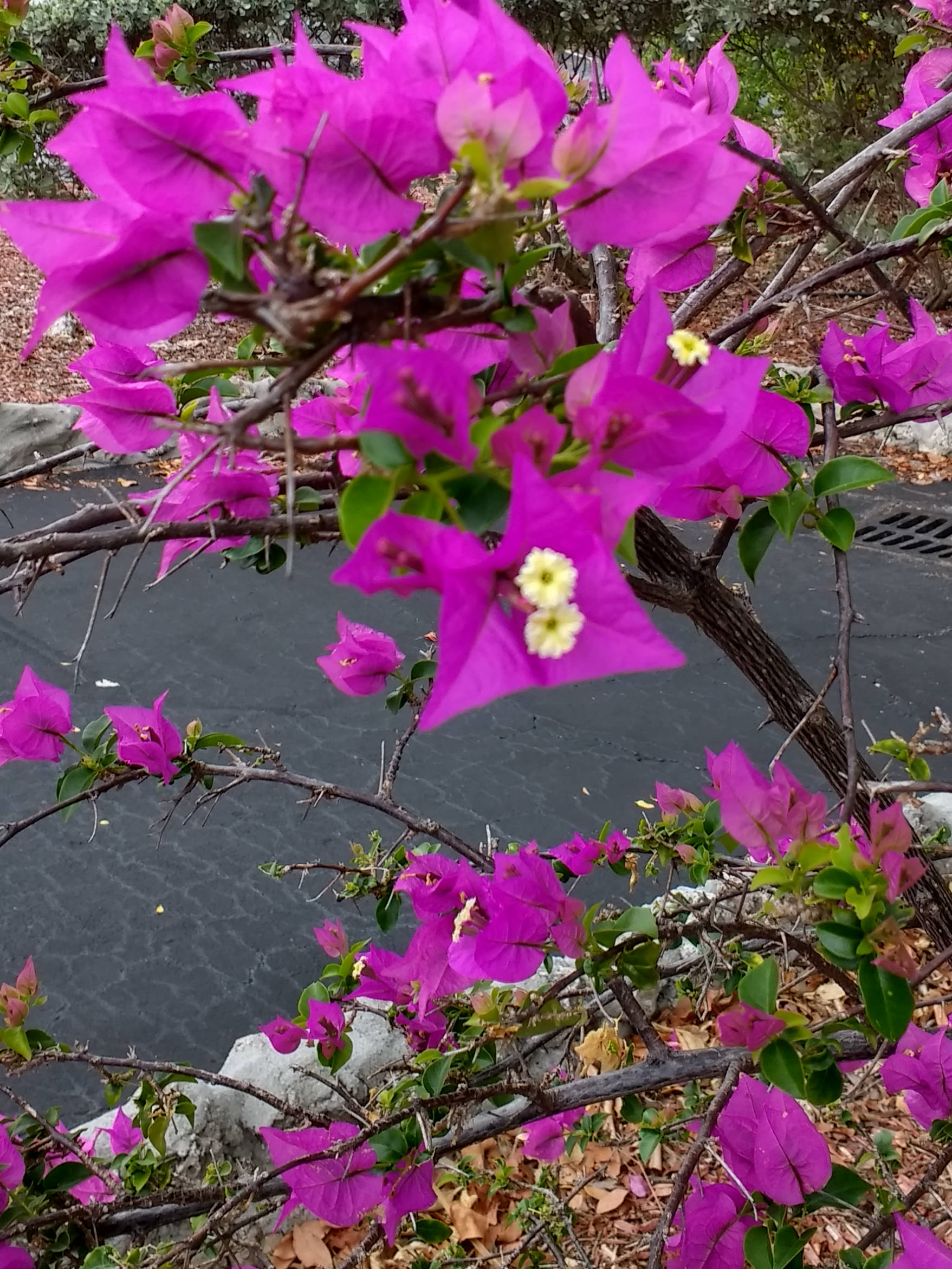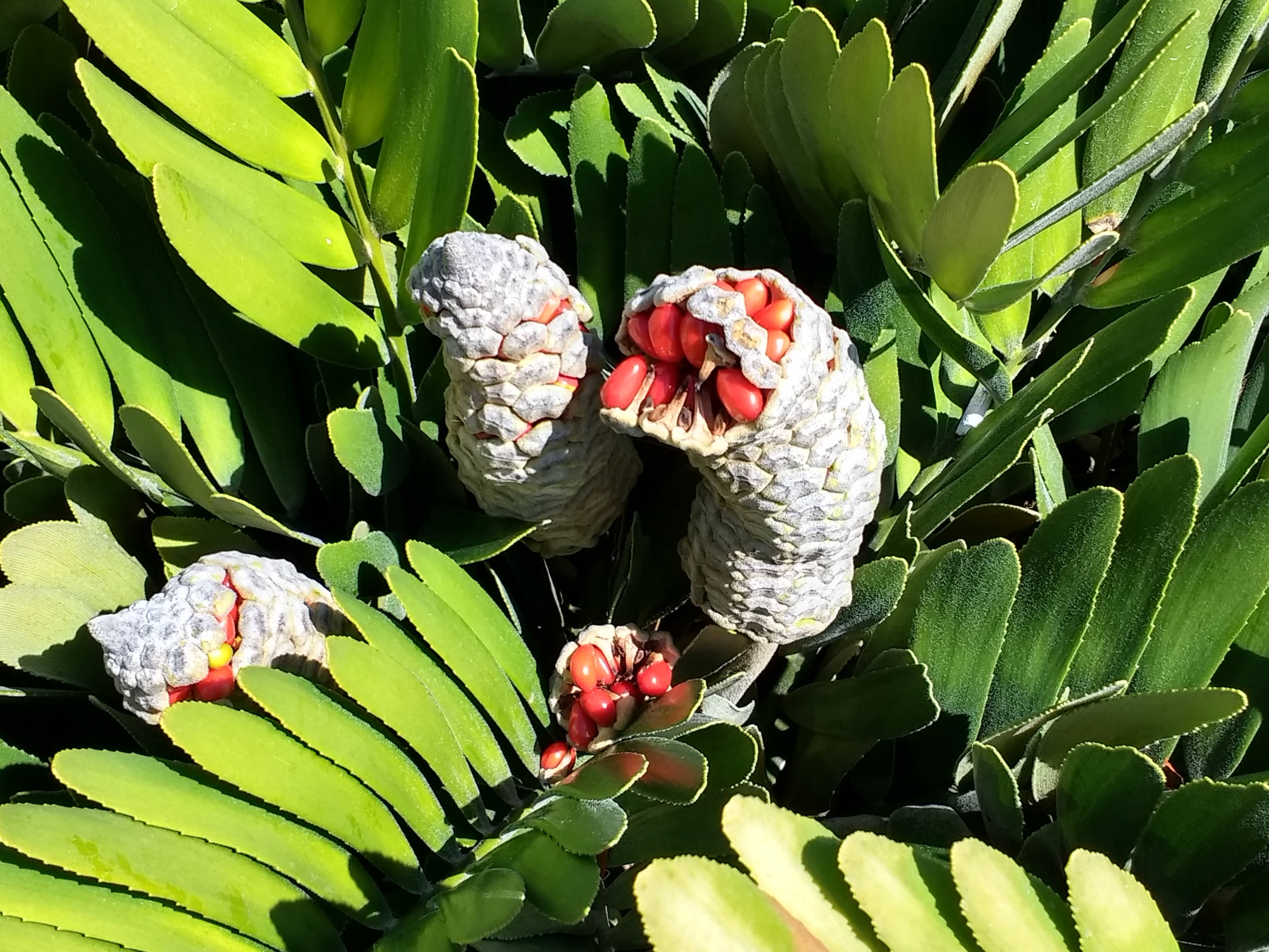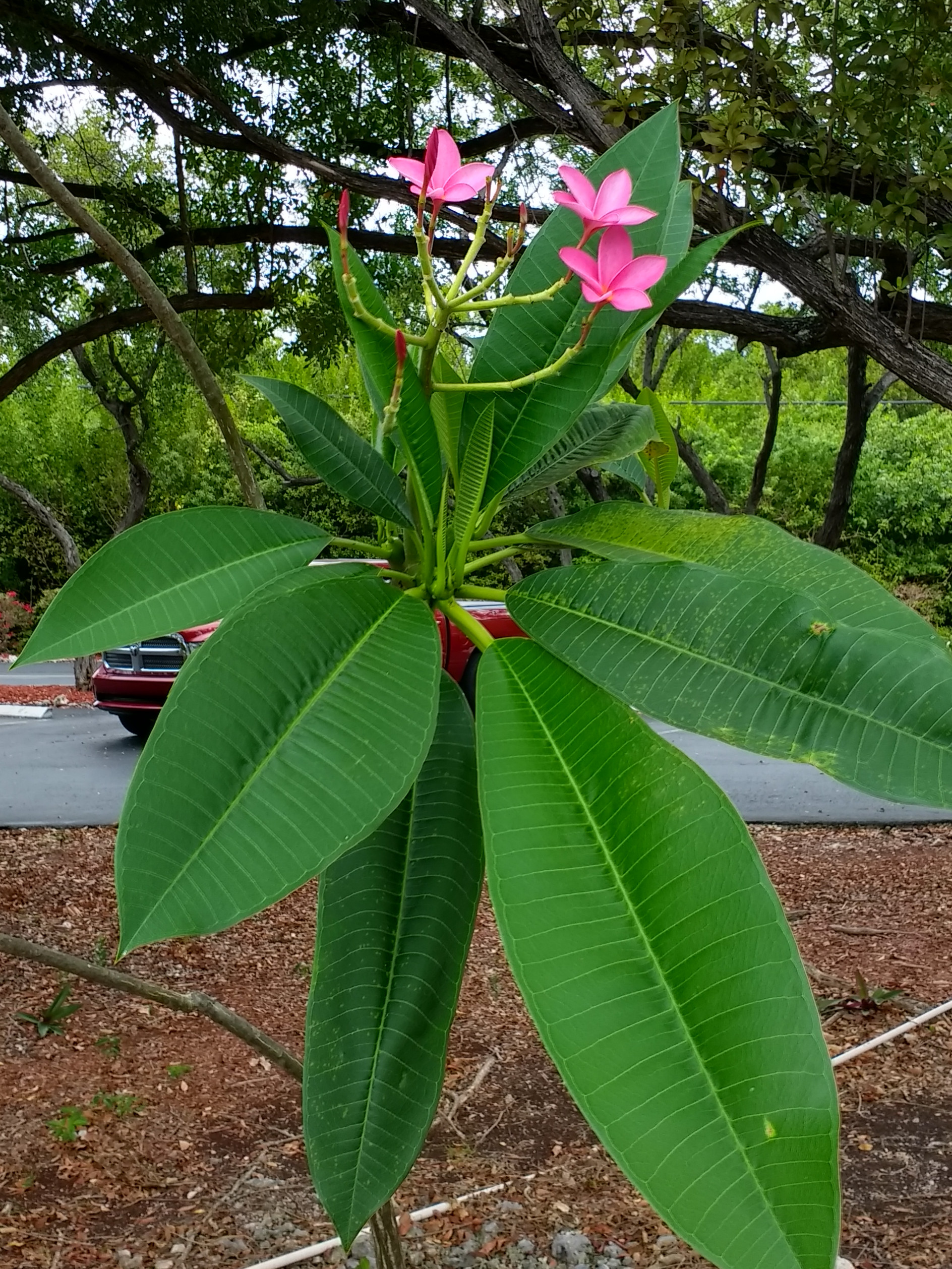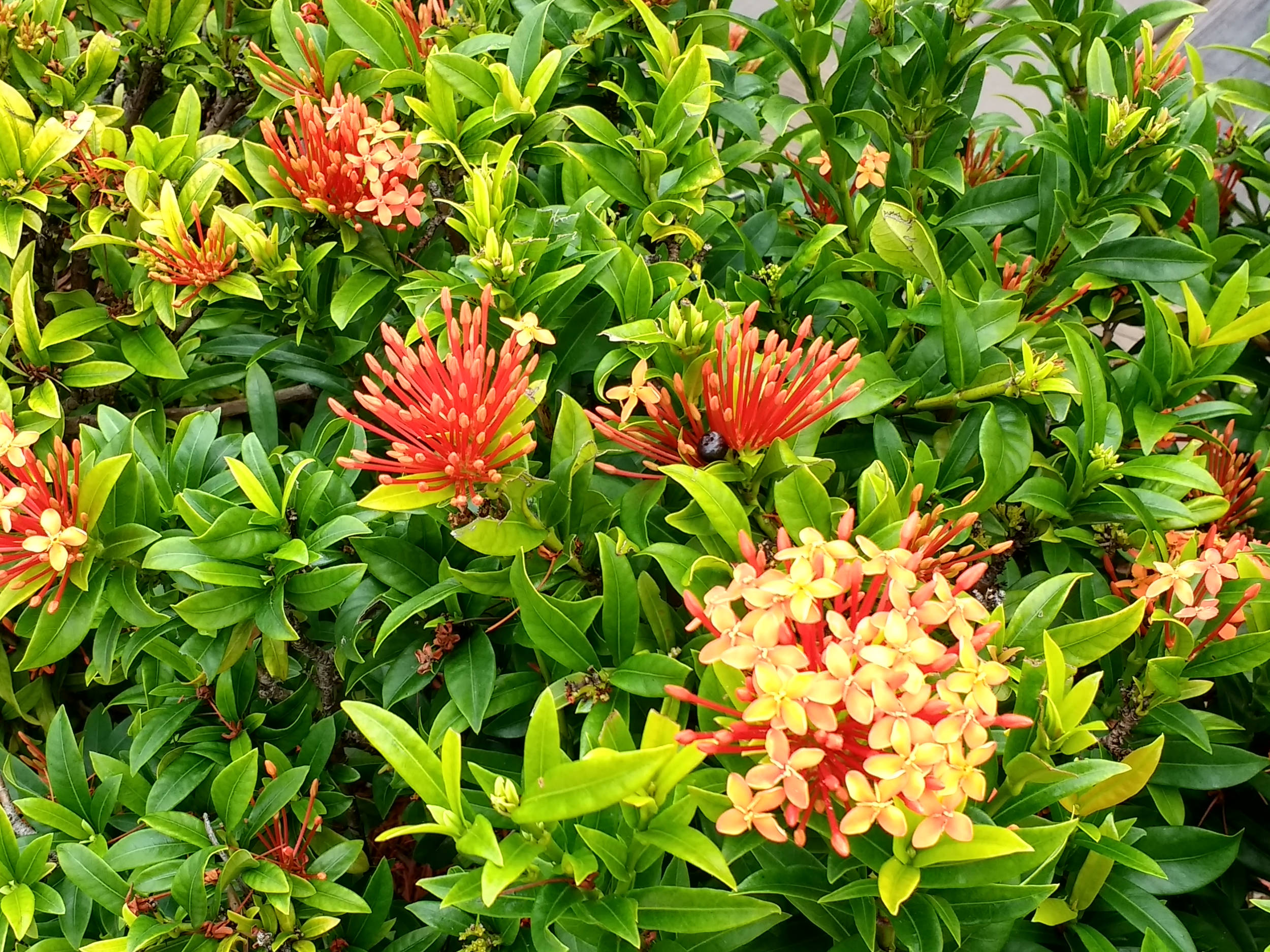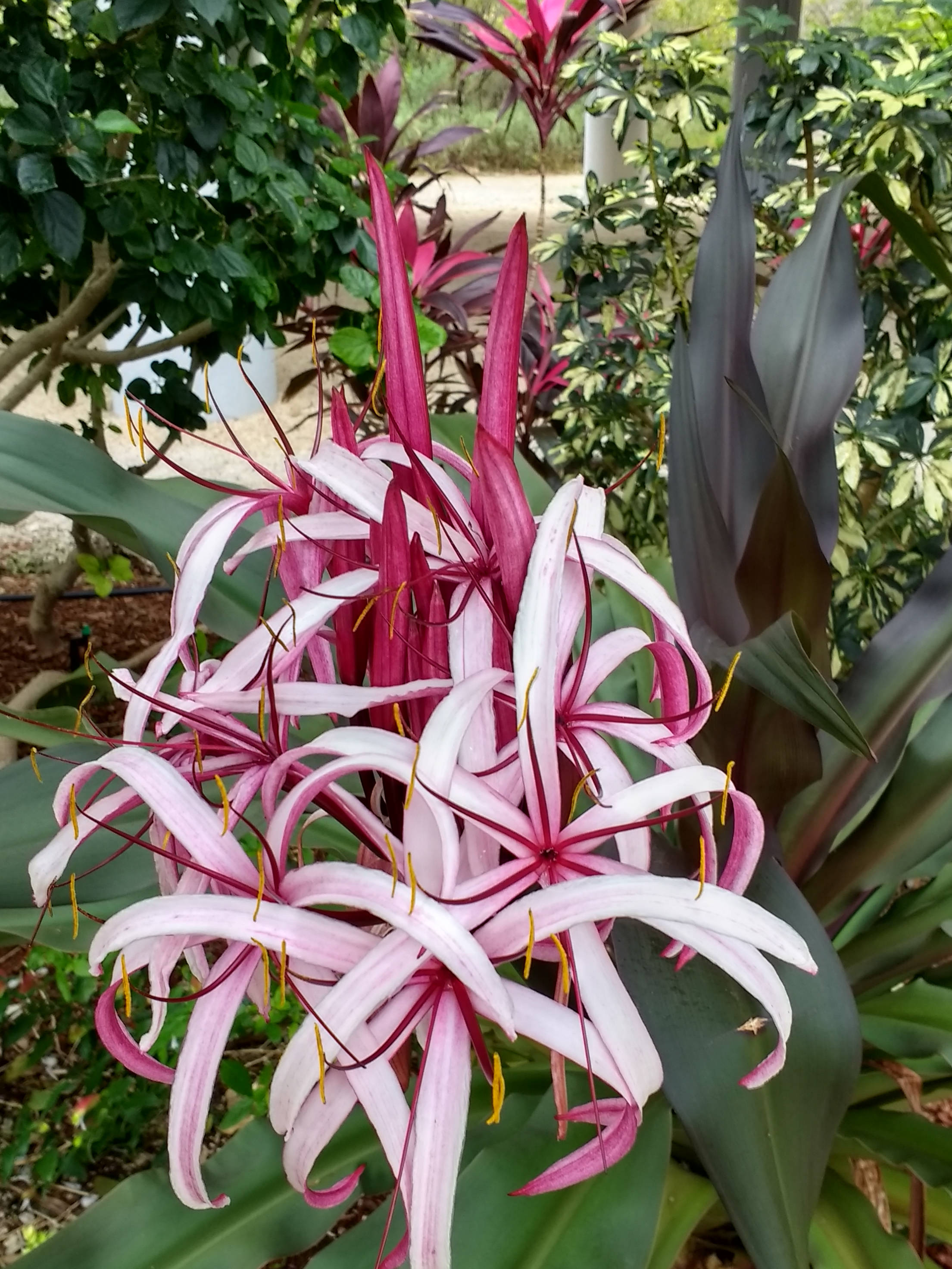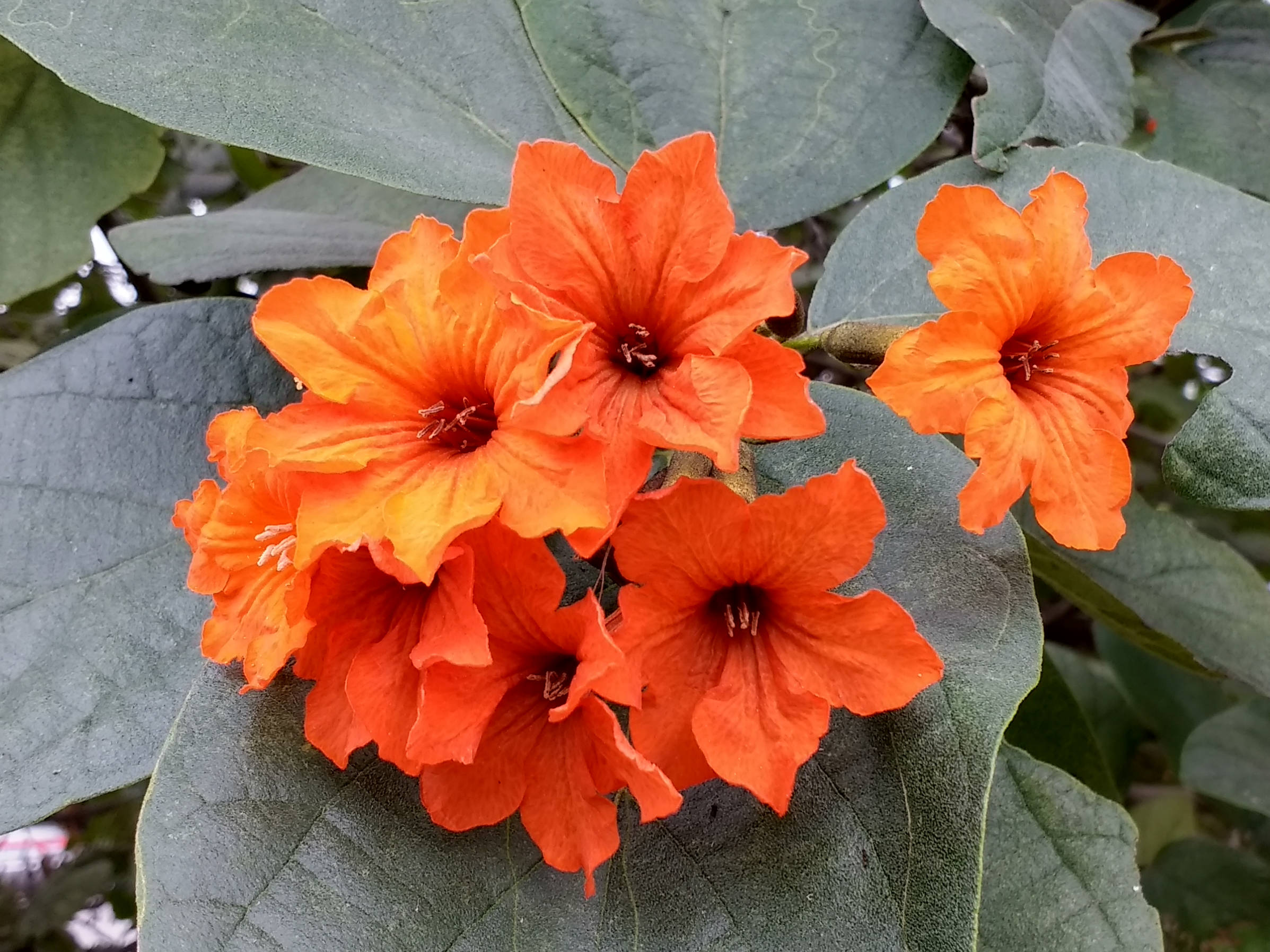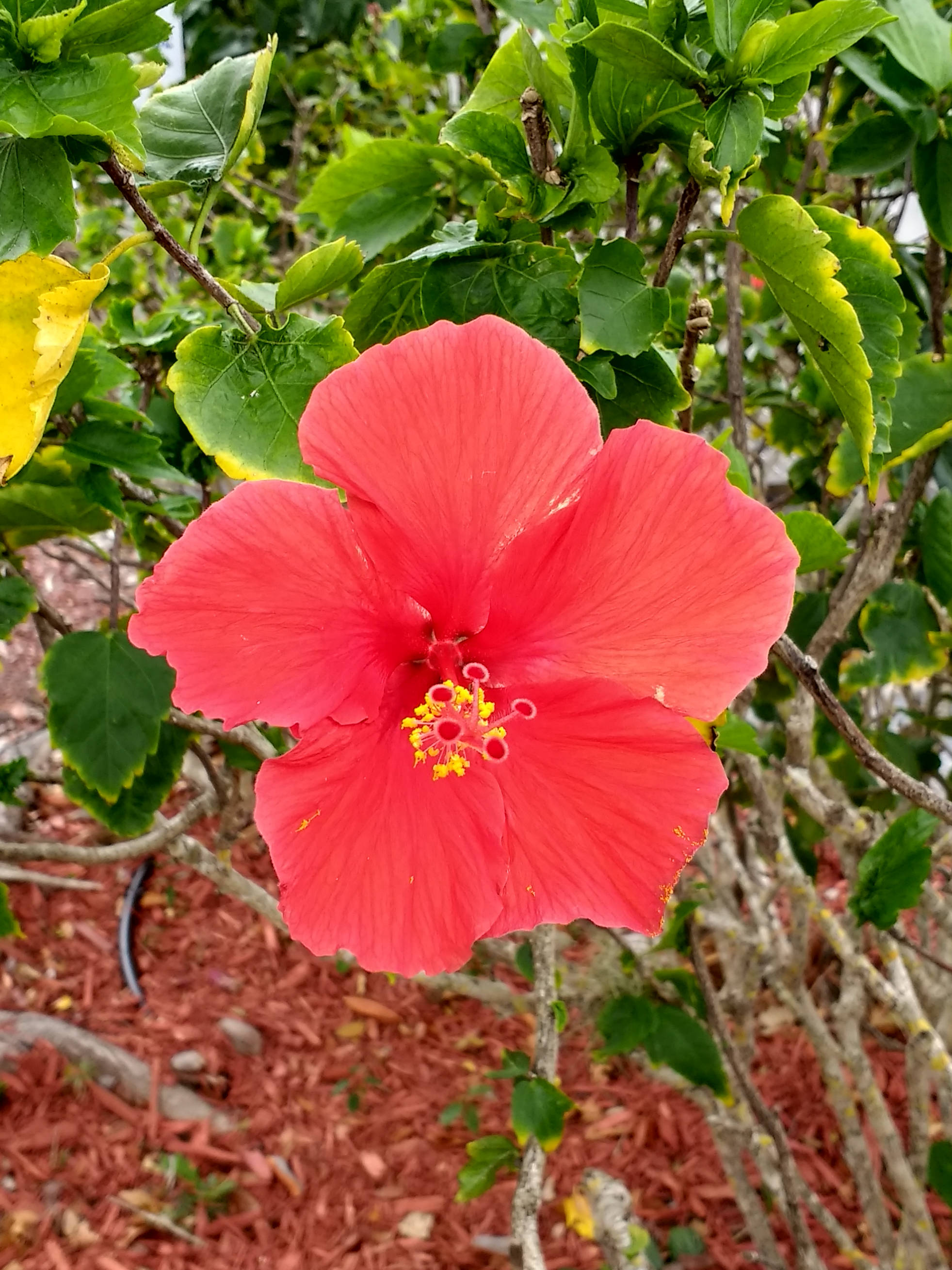Florida 2017
by Mike Thompson, 2/28/2017
We decided to do another winter paddling trip, this time in late February, the week of Jane's winter break from school. Jane and I flew a red-eye from Seattle to Miami on Saturday night and Sunday morning, February 18 and 19. We picked up a rental car at the airport and drove down to the south end of Key Largo, loading up our rental canoe on the way at Florida Bay Outfitters, and then checked into our room at Ocean Pointe.
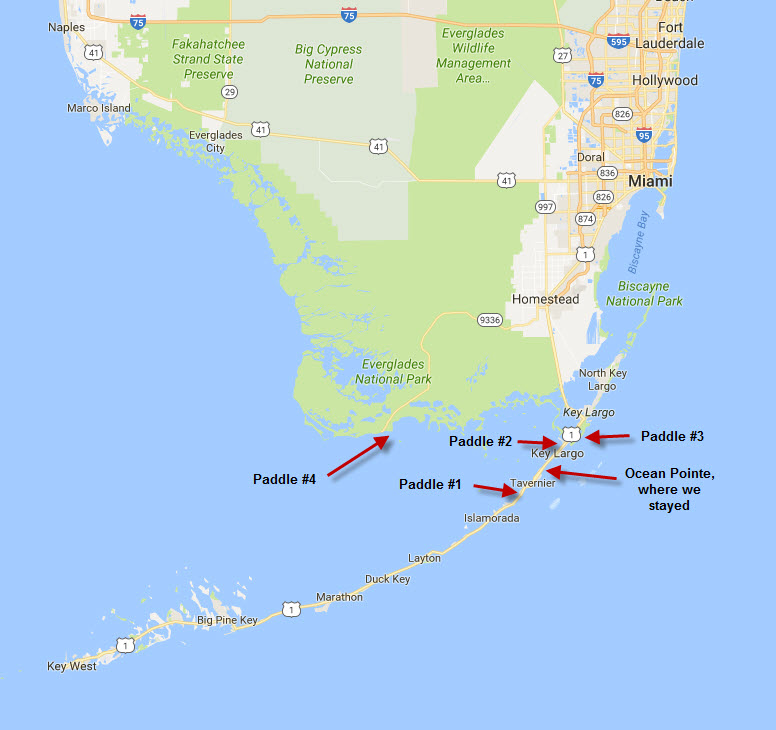
On Monday morning we woke up at 7:30. Jane got a call shortly thereafter, and learned that her mom had died in her sleep about 5:00 AM Seattle time. Jane absorbed the shock, called her brother, John, then called Erika in Denmark, and then called Laura, who was in Albuquerque, New Mexico for the week. We decided to stay and finish out the vacation. We will do a memorial for Marian in late March, while Erika is in the country and able to attend.
We drove south a couple miles and put the canoe in the water at the Tavernier Marina, then paddled all the way to the north end of the channel that separates Key West from Plantation Key, the next island to the southwest. It's all mangroves along the way, very lush and very peaceful, except when a big powerboat goes blasting by. We saw one super-long speedboat with four huge outboards on the back that each said "627" on the side. They did actually look big enough to produce 627 horsepower. The guy at the helm looked bored and lonely. Money can buy you a bigger boat, but not happiness.
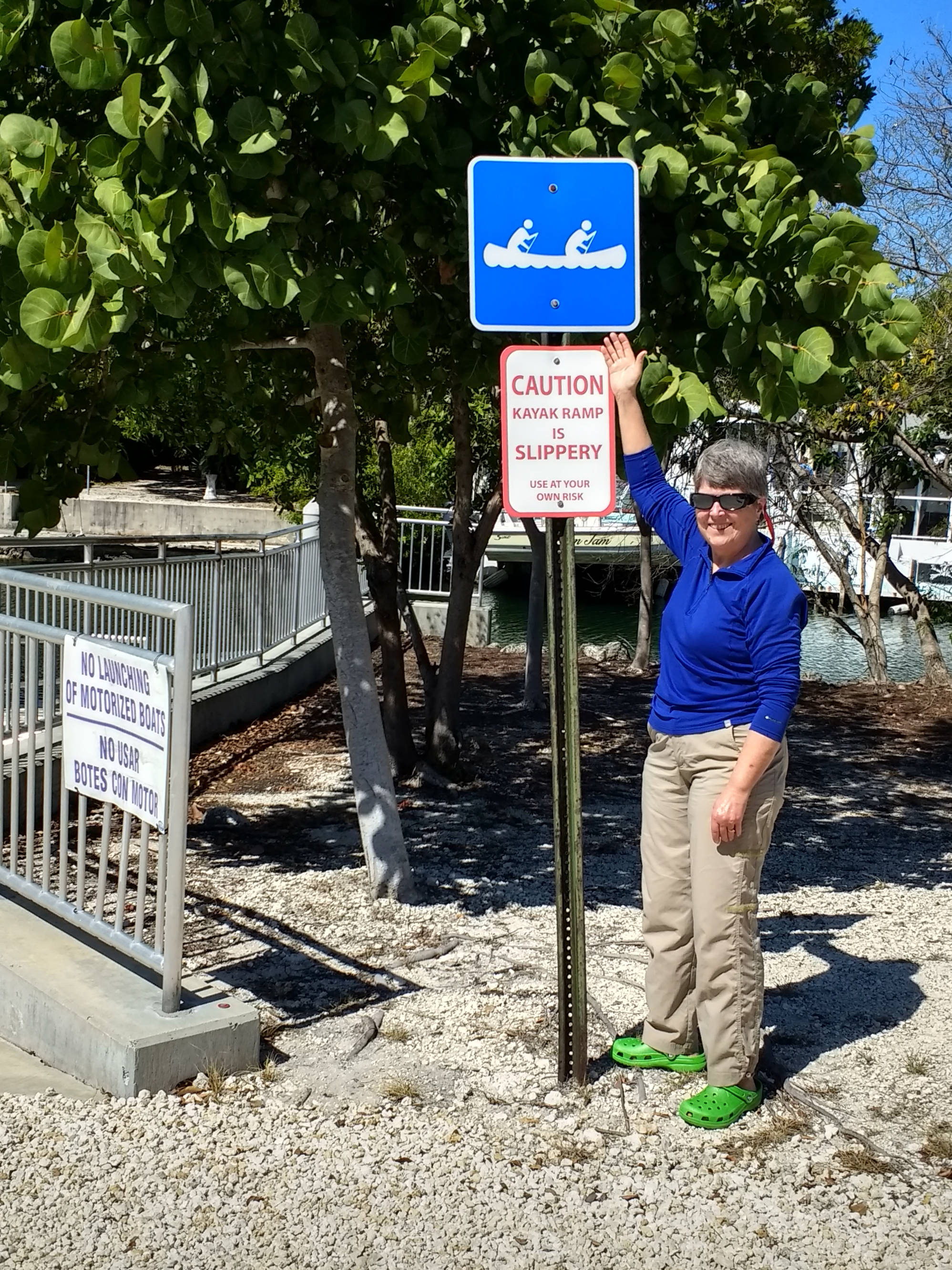
Beautiful paddle! We saw lots of little fishies, a redish shark about two feet long, pelicans and other shorebirds, a couple osprey, and some buzzards. We floated over shallow beds of sea grass and a yellow plant that was shaped sort of like spanish moss but felt like a plastic scouring pad. Had to stop for rest once on our paddle back against the current, but we made it!
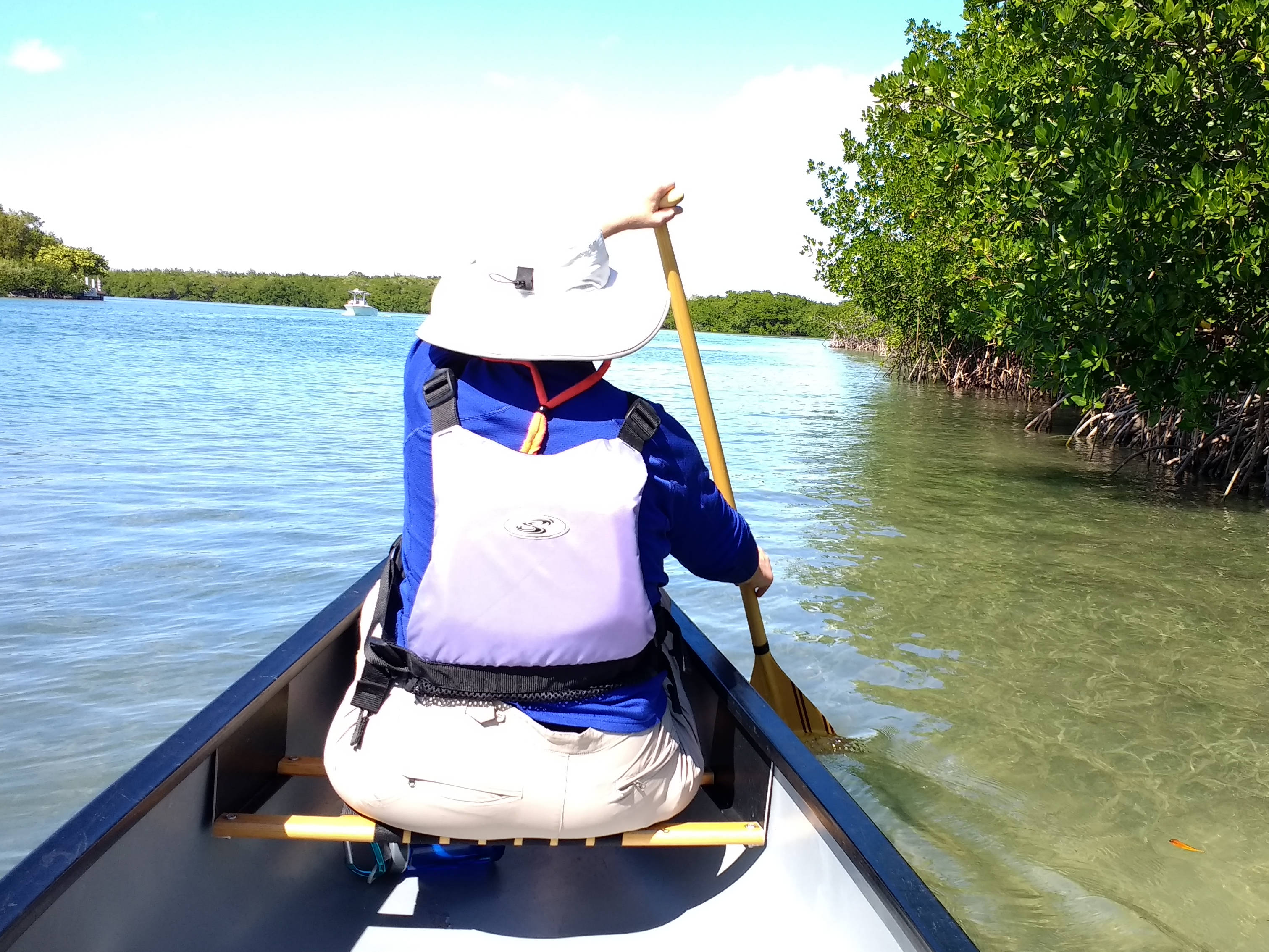
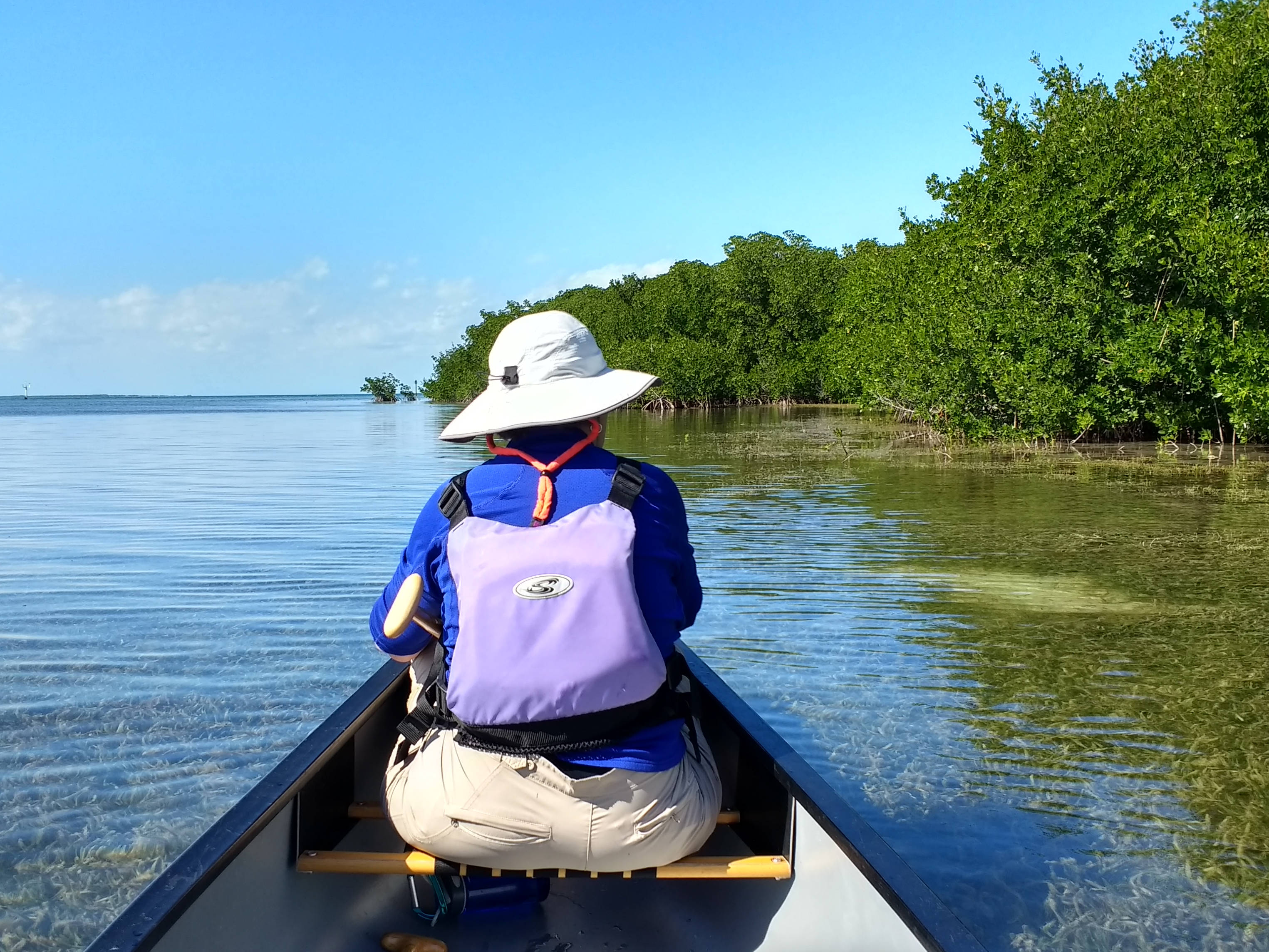
Then we got coffee, drove north about ten miles, and put in next to the Hampton Inn, where the folks at Florida Bay Outfitters had said we might see manatees. We didn't spot any, but we did see a small mangrove island with dozens of pelicans, cormorants, and white ibis perched in the branches, as well as a beautiful sunset. The sun both rises and sets over the ocean here in the Keys.
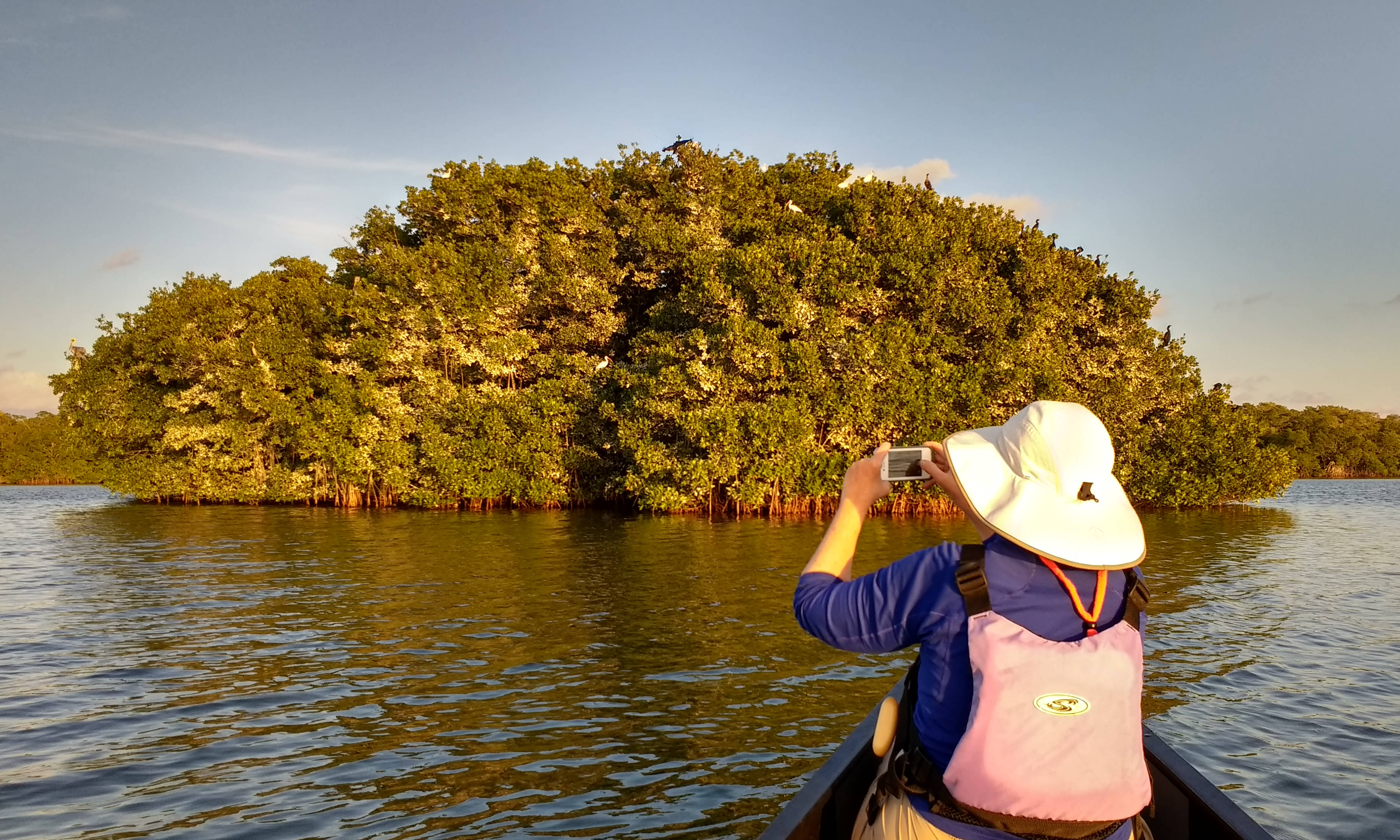
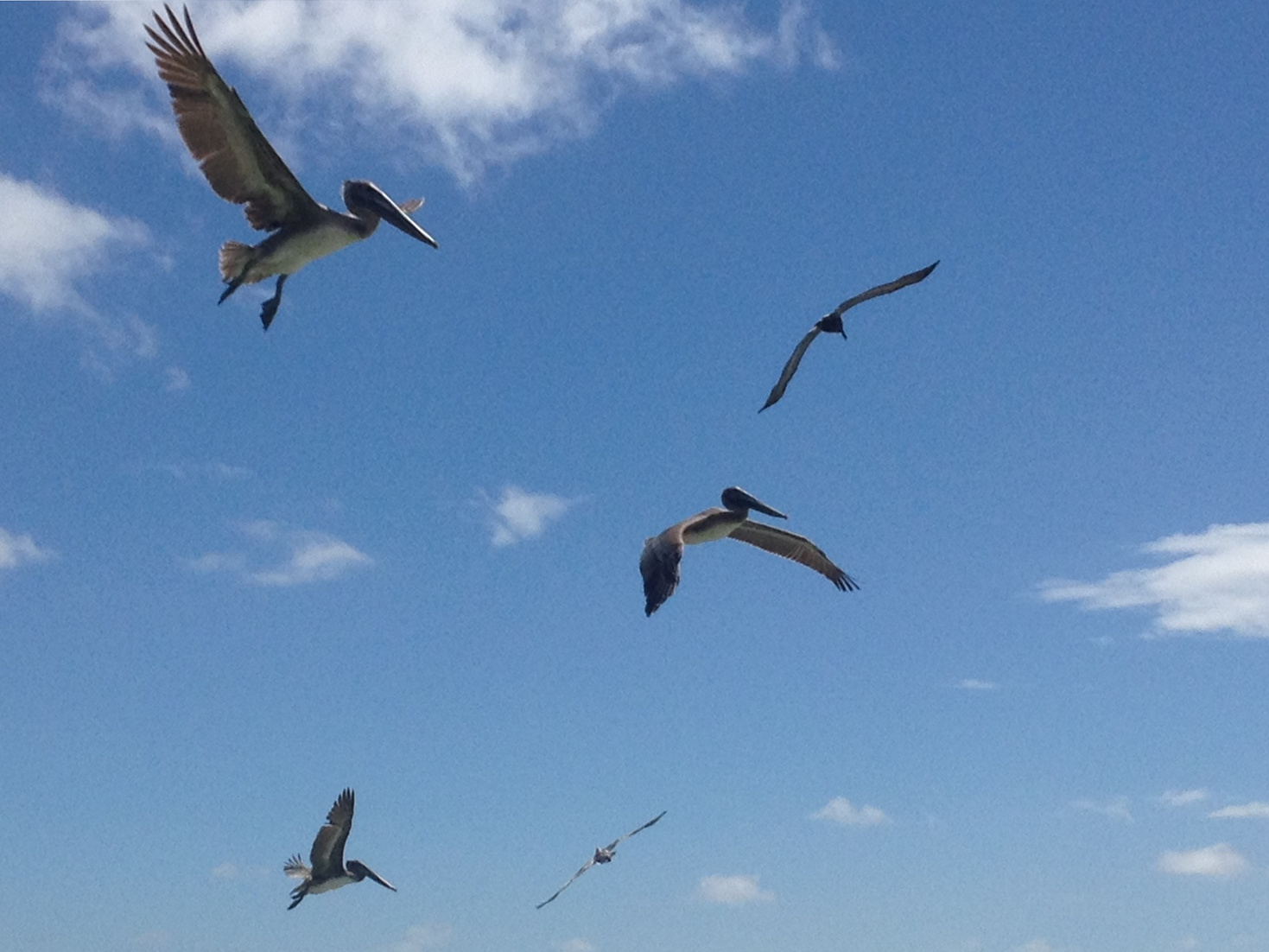
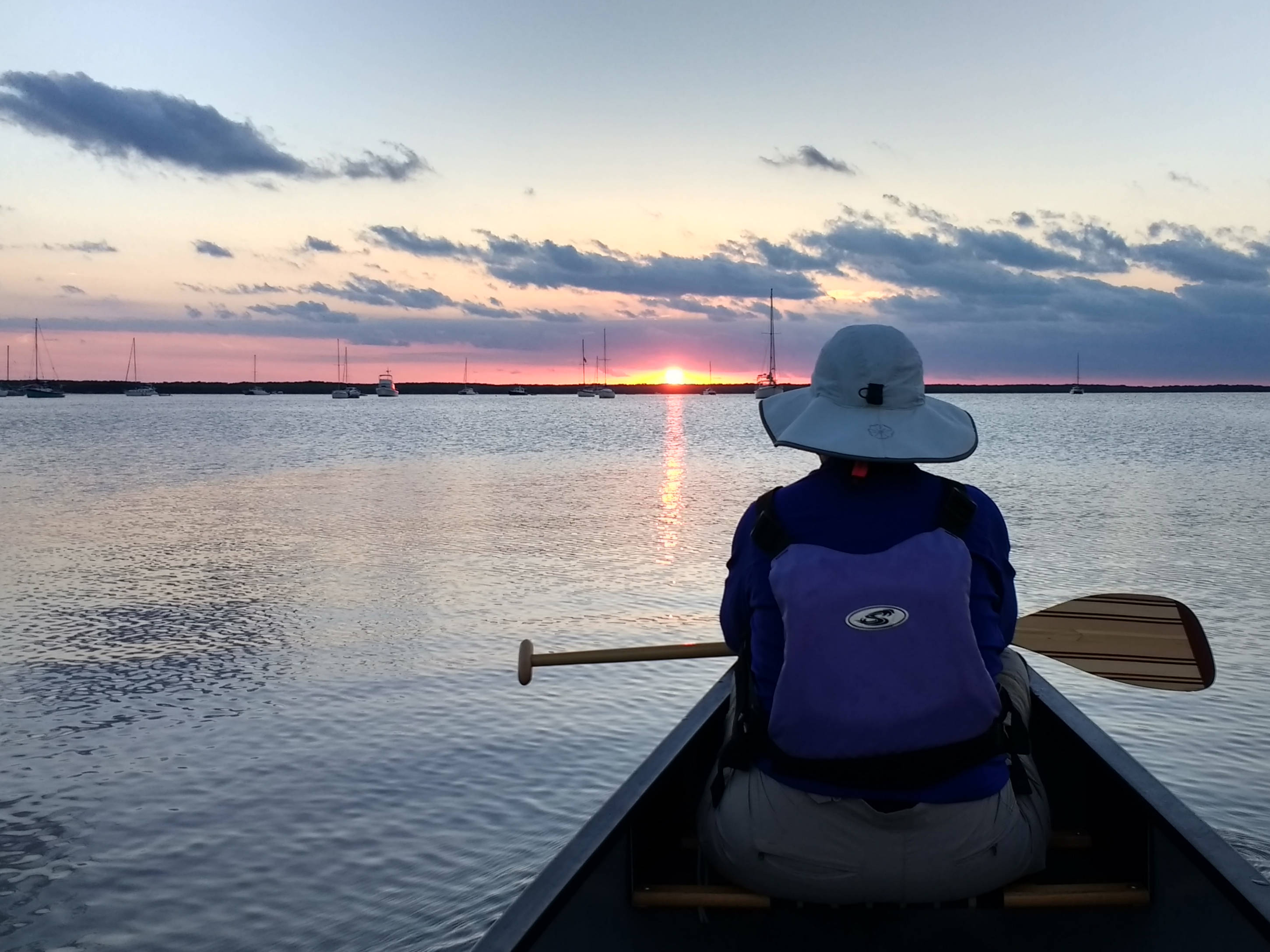
There's also a low-budget "marina" or sorts out this way, consisting of live-aboard powerboats and sail boats, all well past their prime, and one of which was half-sunk. They're at anchor along the mangrove-covered shoreline. We found out later that one of these boats belongs to the kid with the dreadlocks that works at Florida Bay Outfitters. This is one of the ways that young people and the locals hang on here in the Keys, rather than competing for a spot ashore with the big money that comes down from New York for the warm weather and the fishing.
On Tuesday we paddled at John Pennekamp park, through twisty, mangrove-lined canals. We saw a school of tarpon that were about two feet long, and a big school of blue/orange parrot fish. Then we visited a bird sanctuary that had lots of injured birds that were unable to be reintroduced to the wild: hawks, owls, pelicans, stilts, a green heron, a blue jay - pretty much all the species of birds that live around here. They have one pelican that's given the run of the place, and we took his picture.
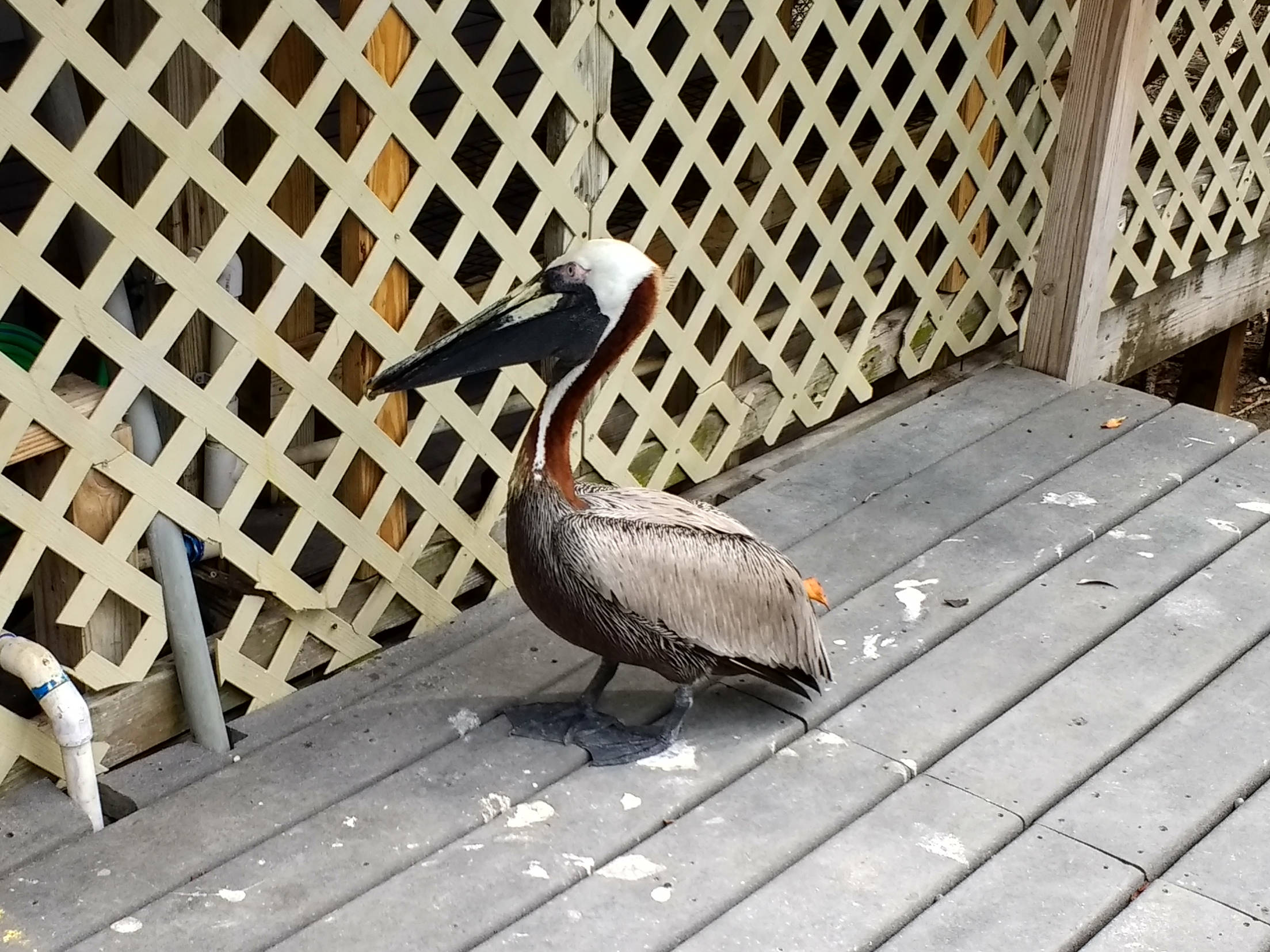
Most days we got up early, made coffee, and watched the sunrise from our little second-floor balcony. There was a big green space next to us, with the ocean only a couple hundred yards to the southwest, and we enjoyed the beautiful view while listening the the birds in the trees and shrubs below our room.
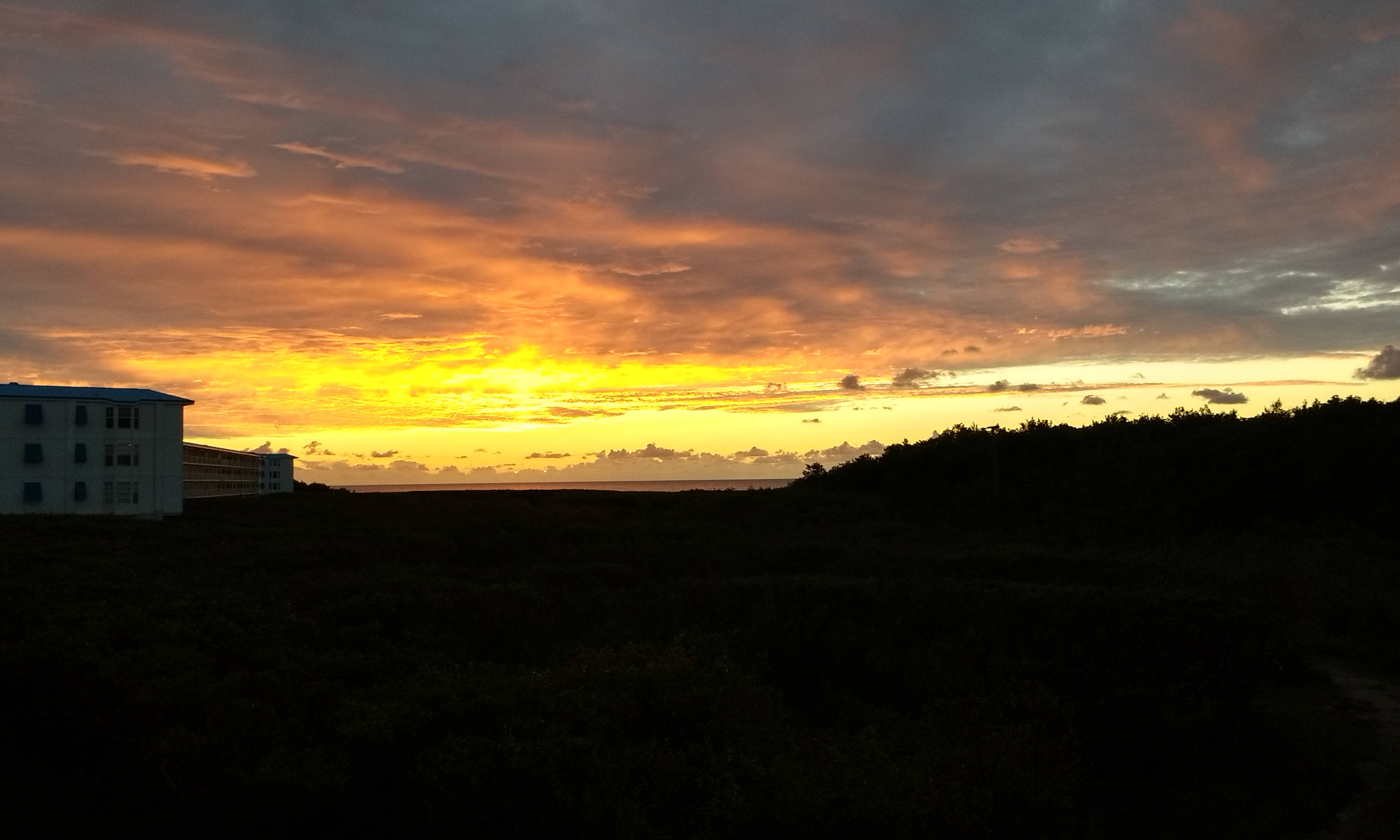
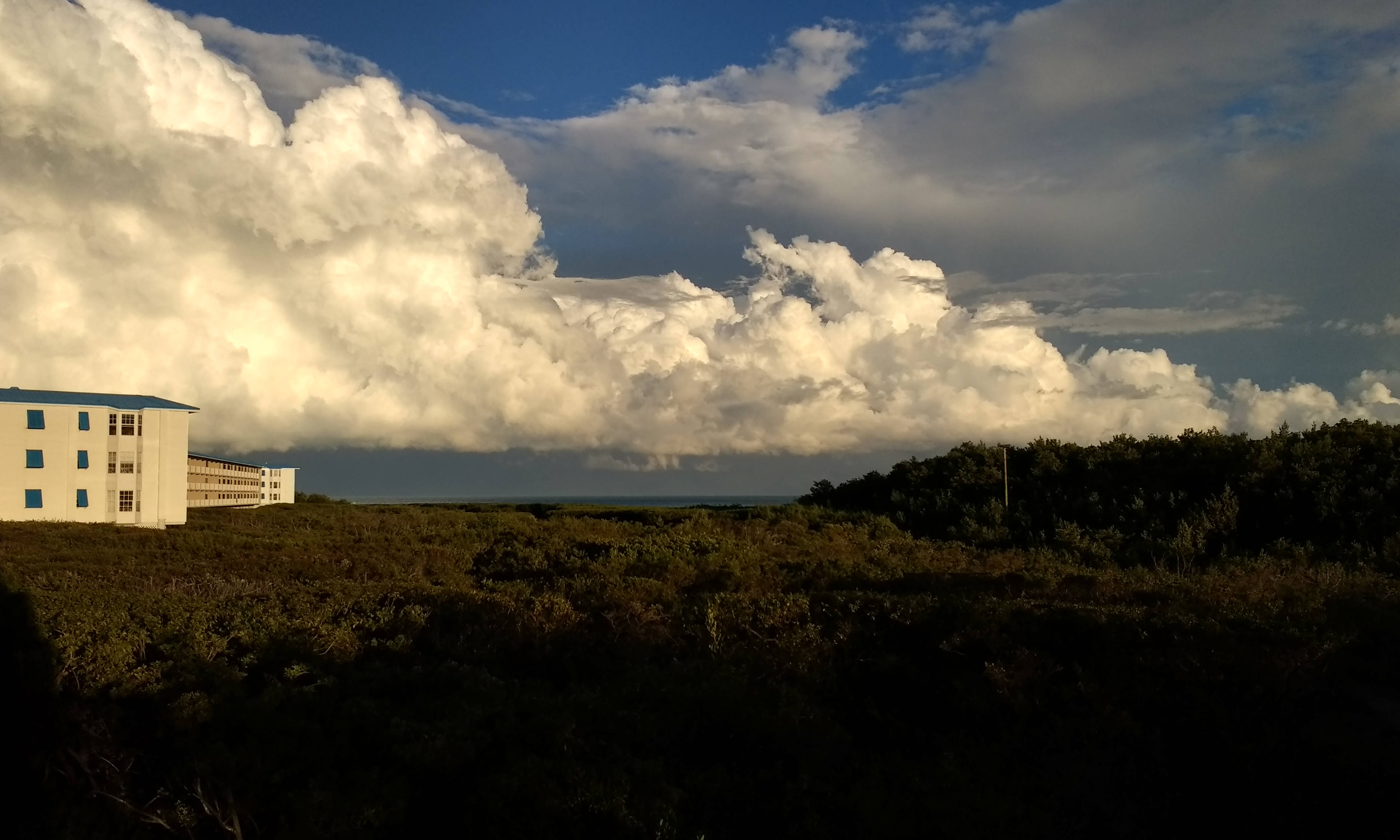
On Wednesday we drove to Key West. On the way down I was attacked by a giant lobster!
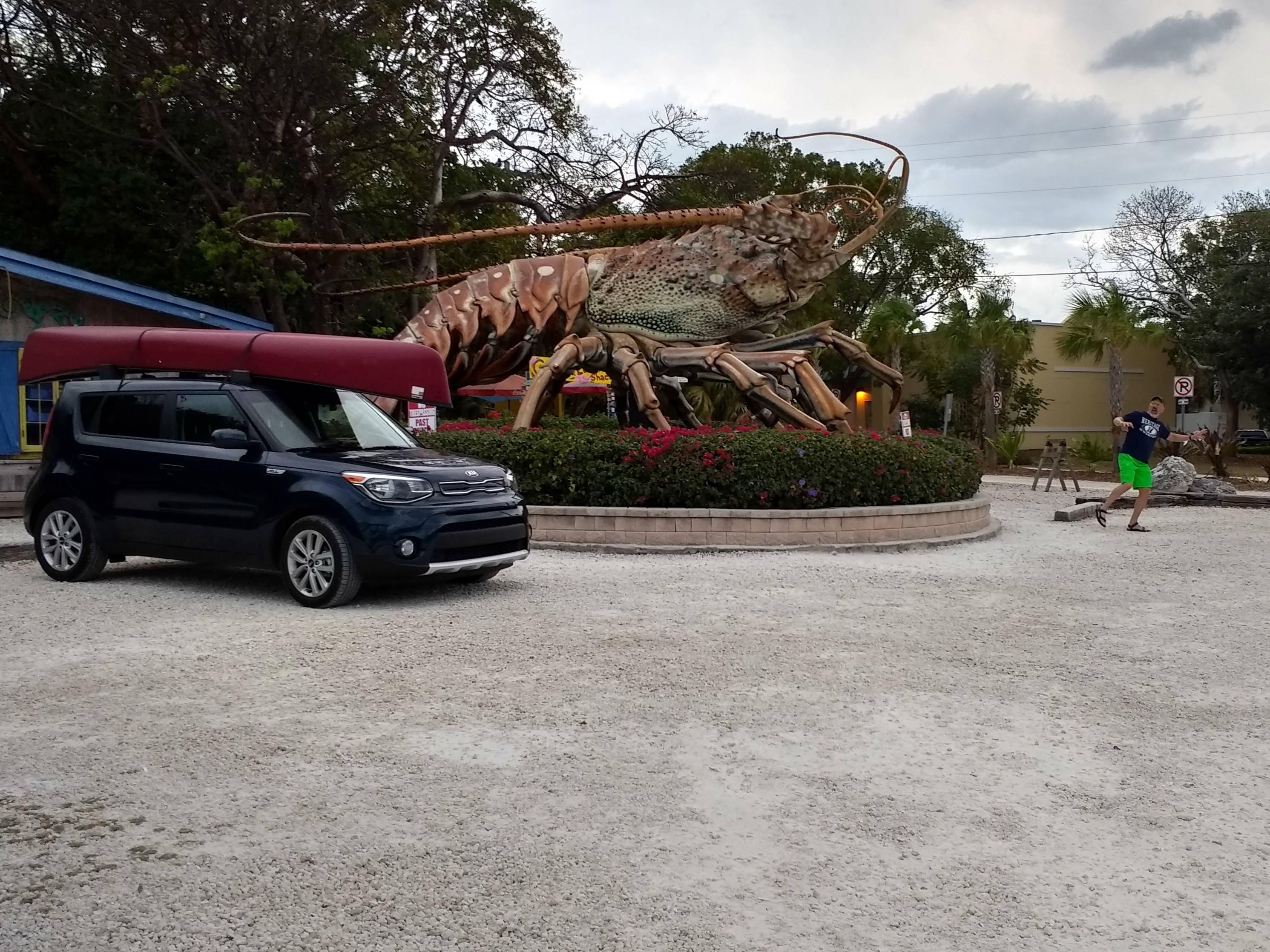
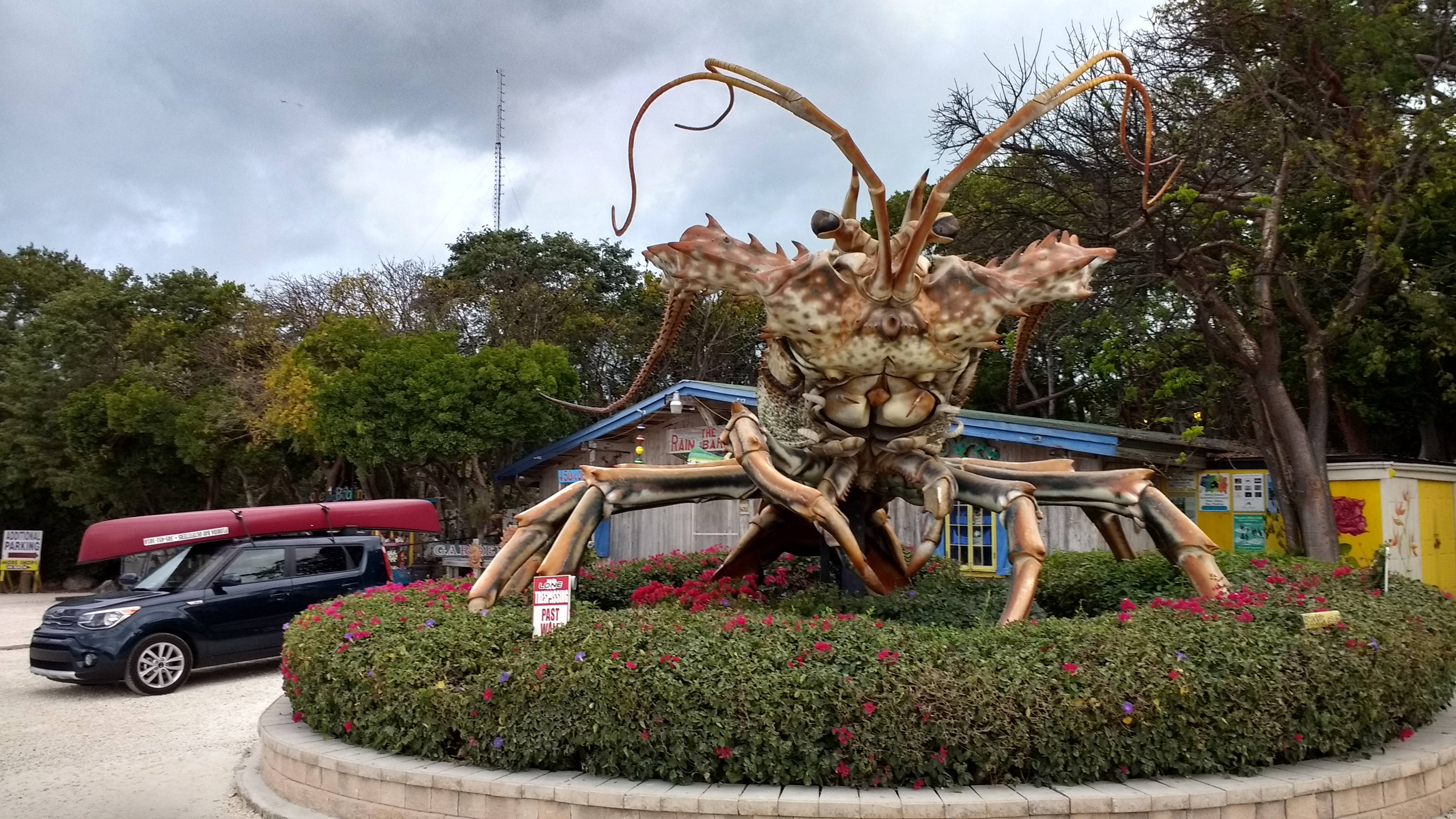
We had to stash the canoe half way down because it was quite windy, and the boat was slipping across the roof of the car. Torential downpour the second half of the drive - had to slow to 30 MPH in order to be able to see! We took the tour at Fort Zachary Taylor though it was still raining pretty hard, and with no other touristas interested in being out in the rain we had the tour guide all to ourselves. He was fantastic, and we had a great time talking with him while learning lots about eastern coastal forts like this one, built between the War of 1812 and the Civil War. By the end of the tour the sun had come out, and the rest of the day was beautiful.
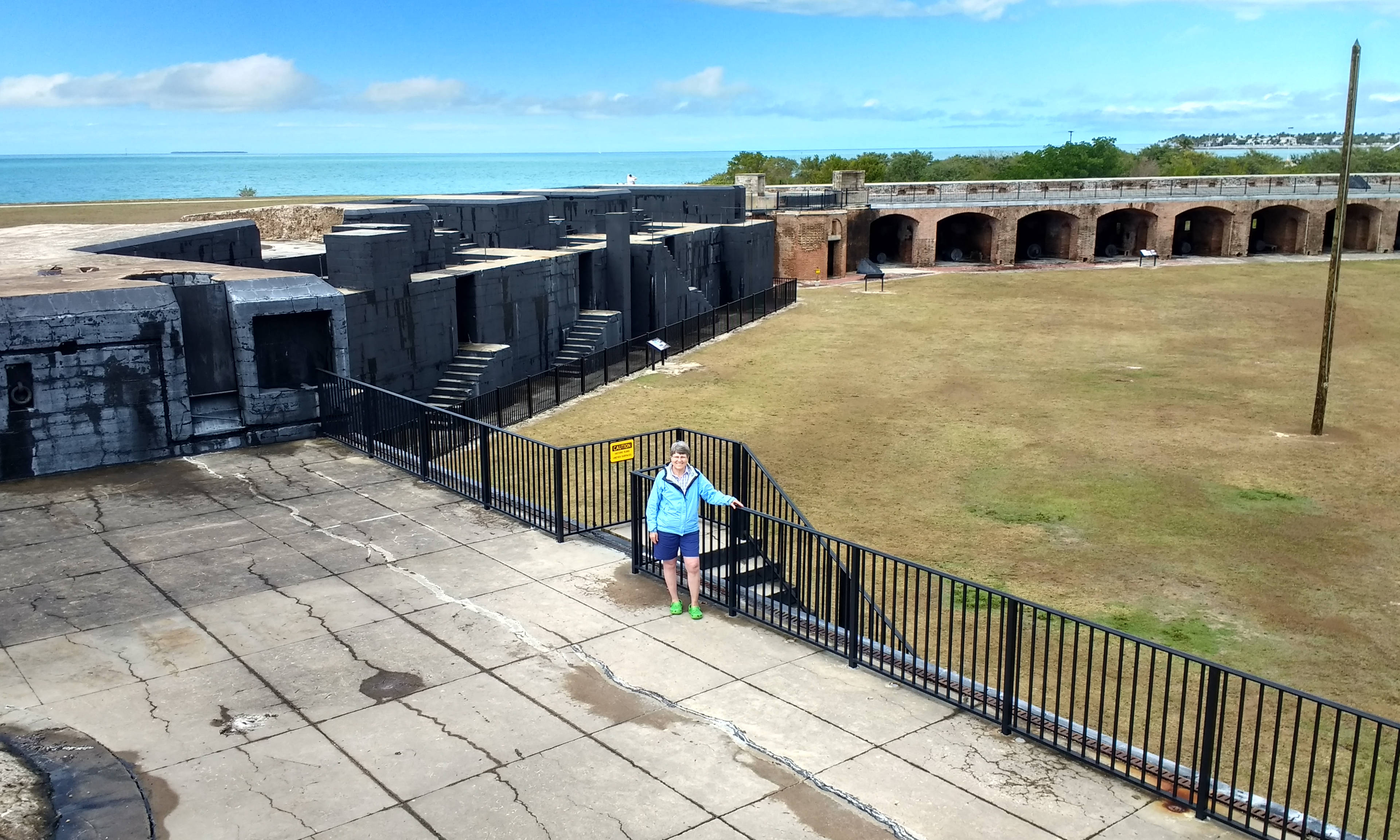
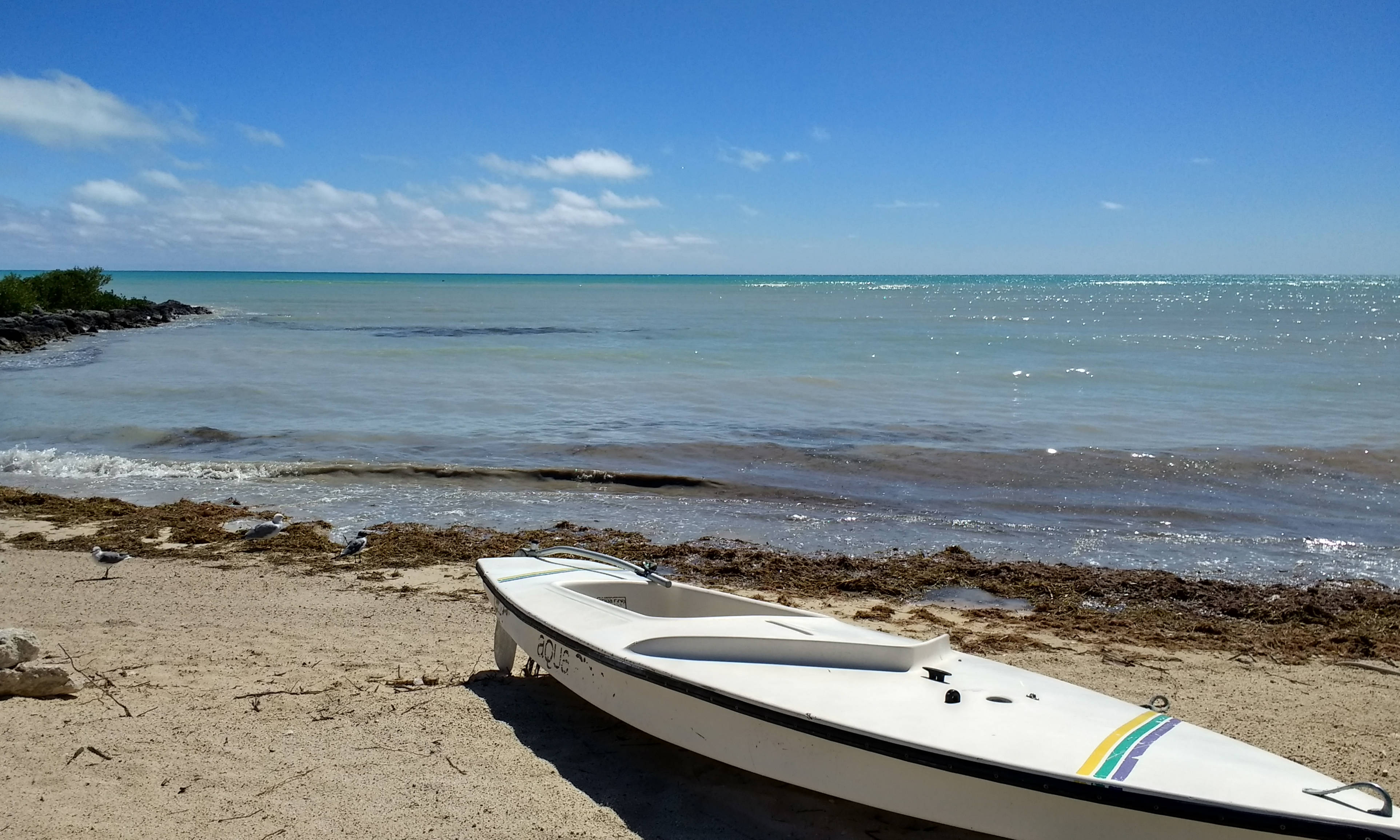
Striking views of green/blue water, with blue sky above, in all directions here. Close your eyes and you're in one of Ernest Hemmingway's novels about the sea: "To Have and Have Not", "The Old Man and the Sea", or "Islands in the Stream". "To Have and Have Not" was written while he lived in Key West, and his two-story home here is now a tourist attraction.
After driving back to Key Largo from Key West we had a great dinner at Mrs. Mac's Kitchen: superb local fish cooked to perfection, green beans, and salad, chased down with a rum punch and topped off with a slice of Key Lime Pie. On Thursday we were up at 6:00 AM again, but this time headed north toward the Everglades. Had coffee and got gas in Florida City, the first town we hit on the mainland, and then headed west through some very productive-looking farmland. There's almost no dirt on the Florida Keys - just broken limestone from the coral beds and what little soil accumulates among the mangroves between hurricanes. Here on the mainland at the edge of the preserve the soil looks deep and fertile, and they're growing squash, corn, tomatoes, and beans.
The Everglades are mostly grasslands, and looking across them reminds one of pictures of the African savannas. There are patches of trees, including pine, mahogany, and the ever-present mangroves, but mostly it's wide expanses of tall grass. Here at Rock Reef Pass many of the pine trees have died. We're guessing it's due to salt water intrusion rather than to the high elevation.
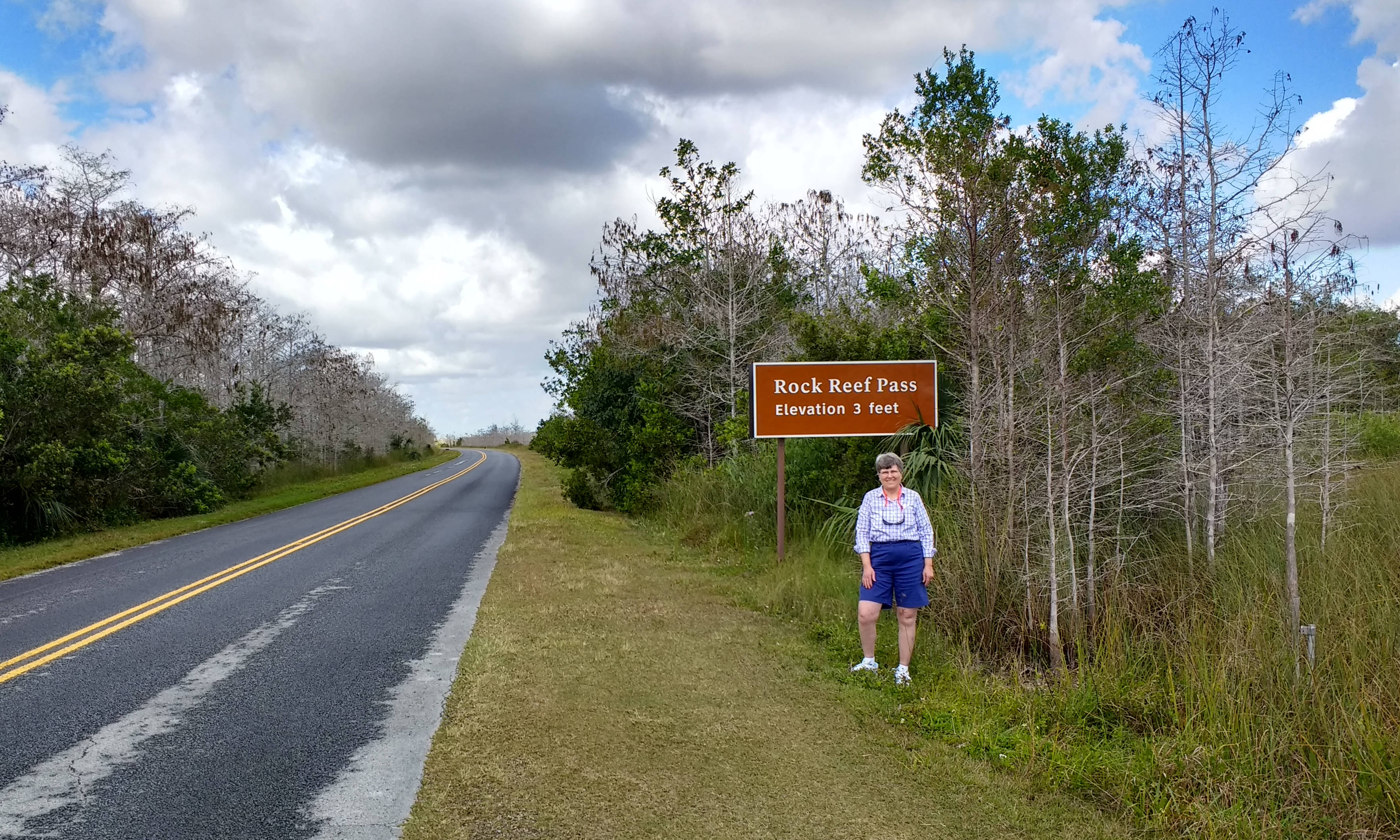
We drove down to the Flamingo Visitor Center at the edge of the shallow stretch of the Atlantic known as Florida Bay, which separates mainland Florida from the Keys. Paddled east and into Snake Bight, a large bay, then had a heck of a time paddling back as it was all against a current and into a brisk breeze out of the west. We saw a manatee hanging out in the marina when we got back to the visitor center. (Note that manatee look really charming from under water, but from the surface about all you see is nostrils at two to three-minute intervals.)
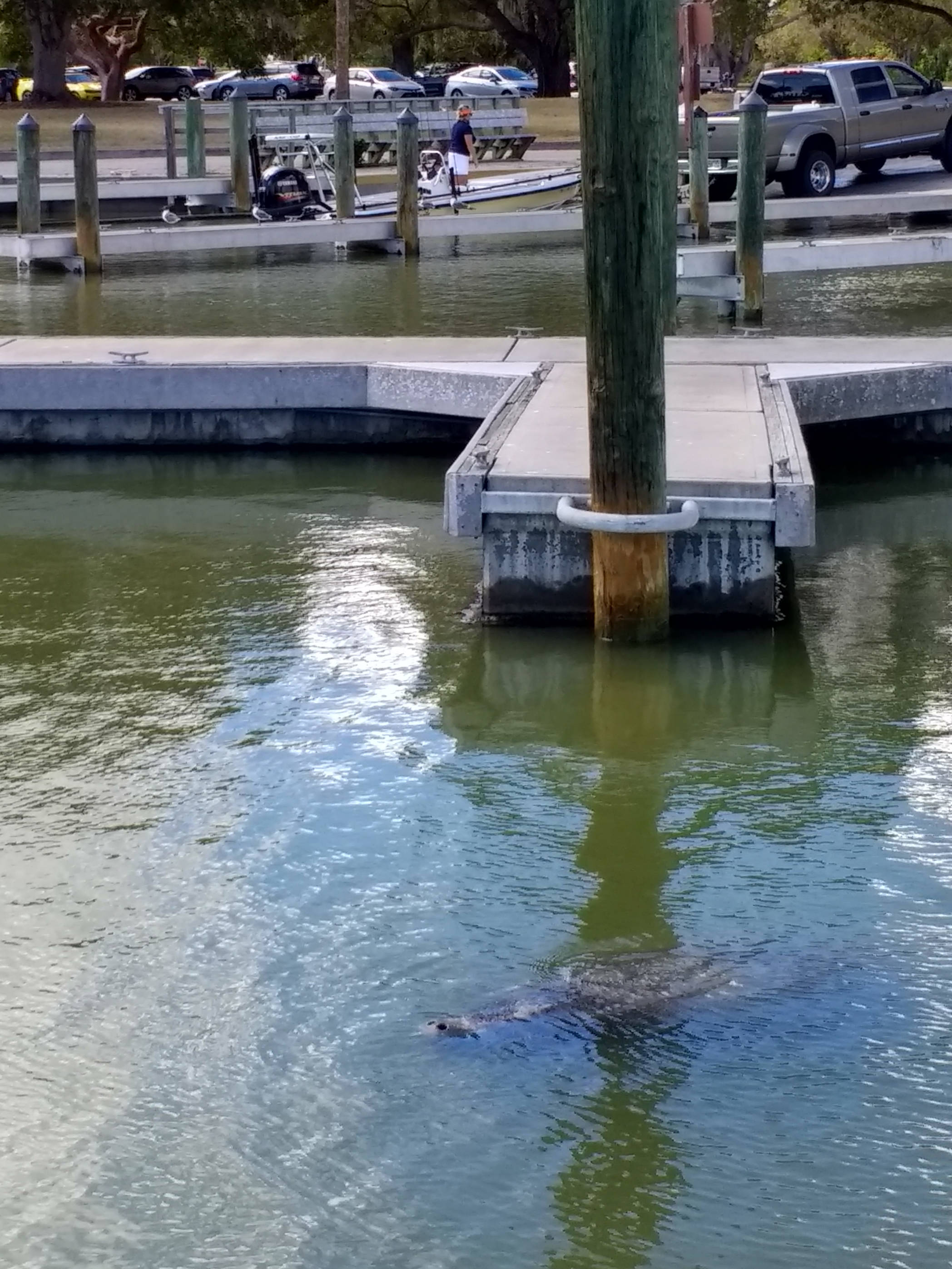
We stopped at West Lake on the drive out and found an eight foot-long aligator sunning itself on the boat ramp.
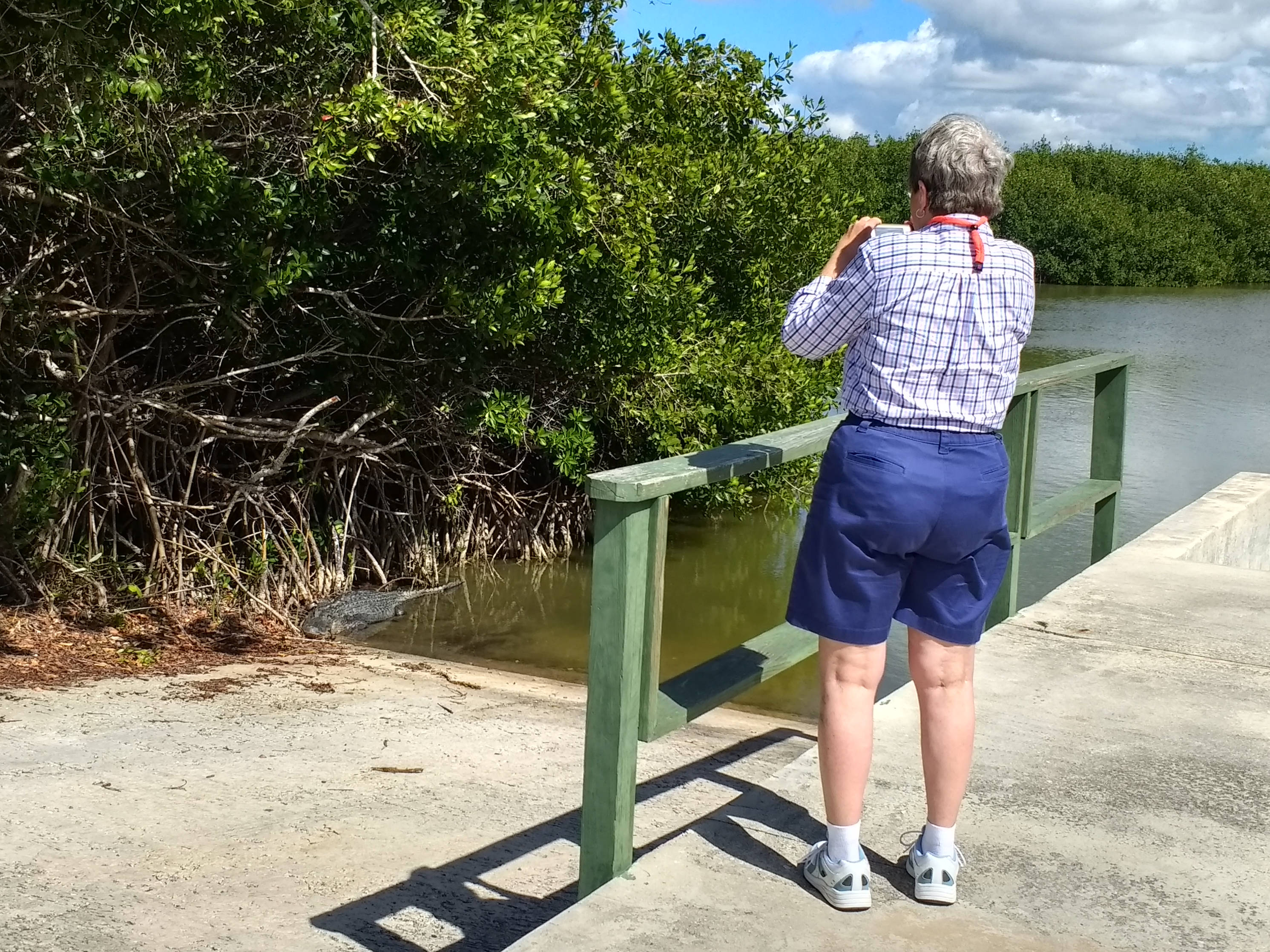
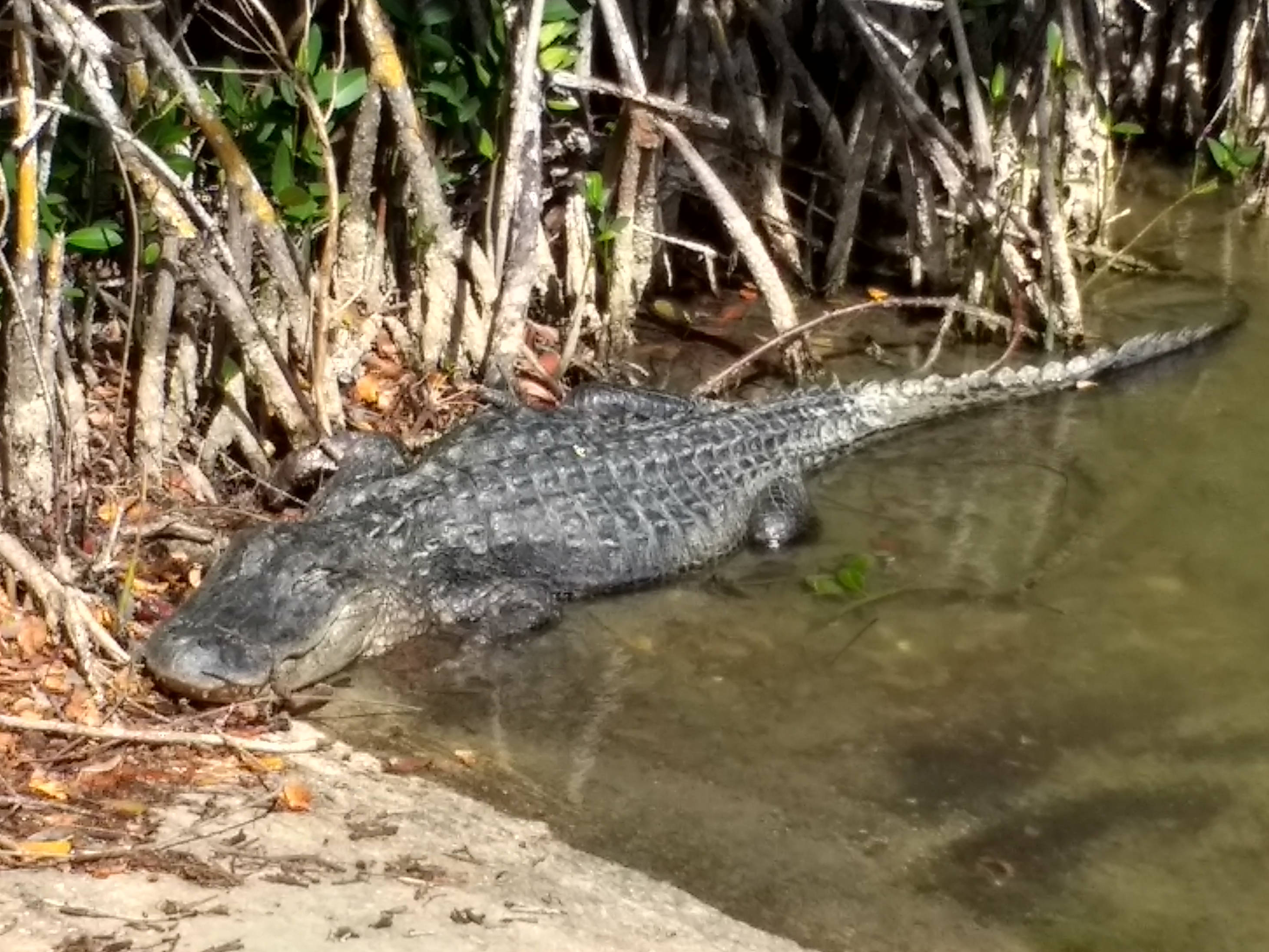
We've been quite lucky about seeing wildlife on this trip. Beautiful shorebirds have been our constant company while paddling, and we've also seen other birds (including bright red cardinals), lots of fish, several big iguana, and lots of beautiful flowers. Fortunately we've seen near-zero insects, probably because we're visiting near the end of the dry season down here. We've also seen zero snakes, which is the right number as far as I'm concerned. We've really enjoyed our nice, warm stay here (it's still snowing in the Northwest!), and will remember this very unusual part of the planet fondly.
